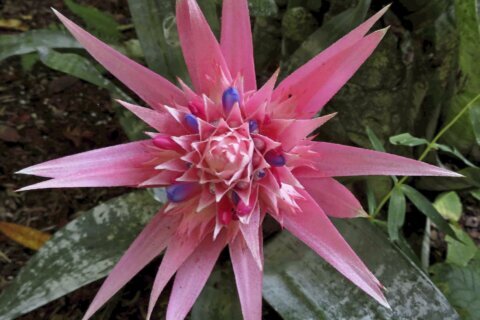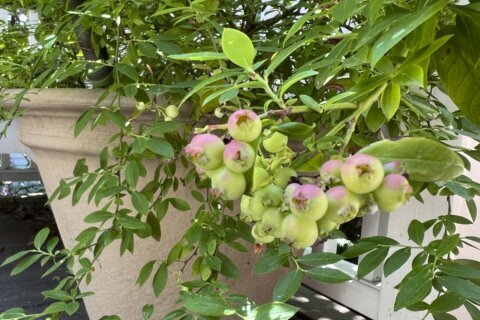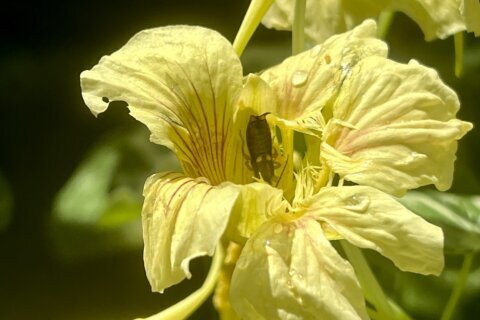The U.S. National Arboretum is known for its expansive collection of plants across 446 acres of land, the National Bonsai & Penjing Museum and the permanent installation of 22 sky-high Corinthian columns that at one time supported the east portico of the U.S. Capitol.
But just around the corner from those columns is a green space that has been a mainstay in the community for more than 50 years: the Washington Youth Garden.
During an interview with WTOP, Christin Riddick strolled through the rows of garden plots with ease and understanding, able to pinpoint which budding greens are ready for harvesting and which may need some extra coaxing in the coming months.
He smiled at the “cultural crops” found in the green space like the scotch bonnet peppers and the pungent Mexican herb, papalo, and he pinched the blossoming greens of one plant to taste the fresh, bitter flavors, while grazing his fingertips over coarse blades of grass nearby.
Over the span of a year, “hundreds” of volunteers and students participate in the community effort to keep the garden thriving, and Riddick, as the on-site program manager, is one of the main team members who not only maintains the garden, but inspires others to join the efforts.
Since the D.C. Department of Parks and Recreation established the one-acre space in 1971, the Washington Youth Garden has sparked a love of the natural world in D.C.-area children and the general community by demonstrating horticultural skills.
The Washington Youth Garden collaborates with several organizations, including D.C. Public Schools, the D.C. Environmental Education Consortiums and the University of the District of Columbia’s Master Gardener program.
The garden is also one of four in the District that participates in the Let’s Move! Museums & Gardens, a comprehensive initiative launched by First Lady Michelle Obama, dedicated to fighting childhood obesity.
“We have something a little bit for everyone,” said Riddick, who noted that there are summer jobs offered at the garden through the District’s Summer Youth Employment Program. Teachers can sign up for “SPROUT Field Trips” offered to teach youth about garden basics.

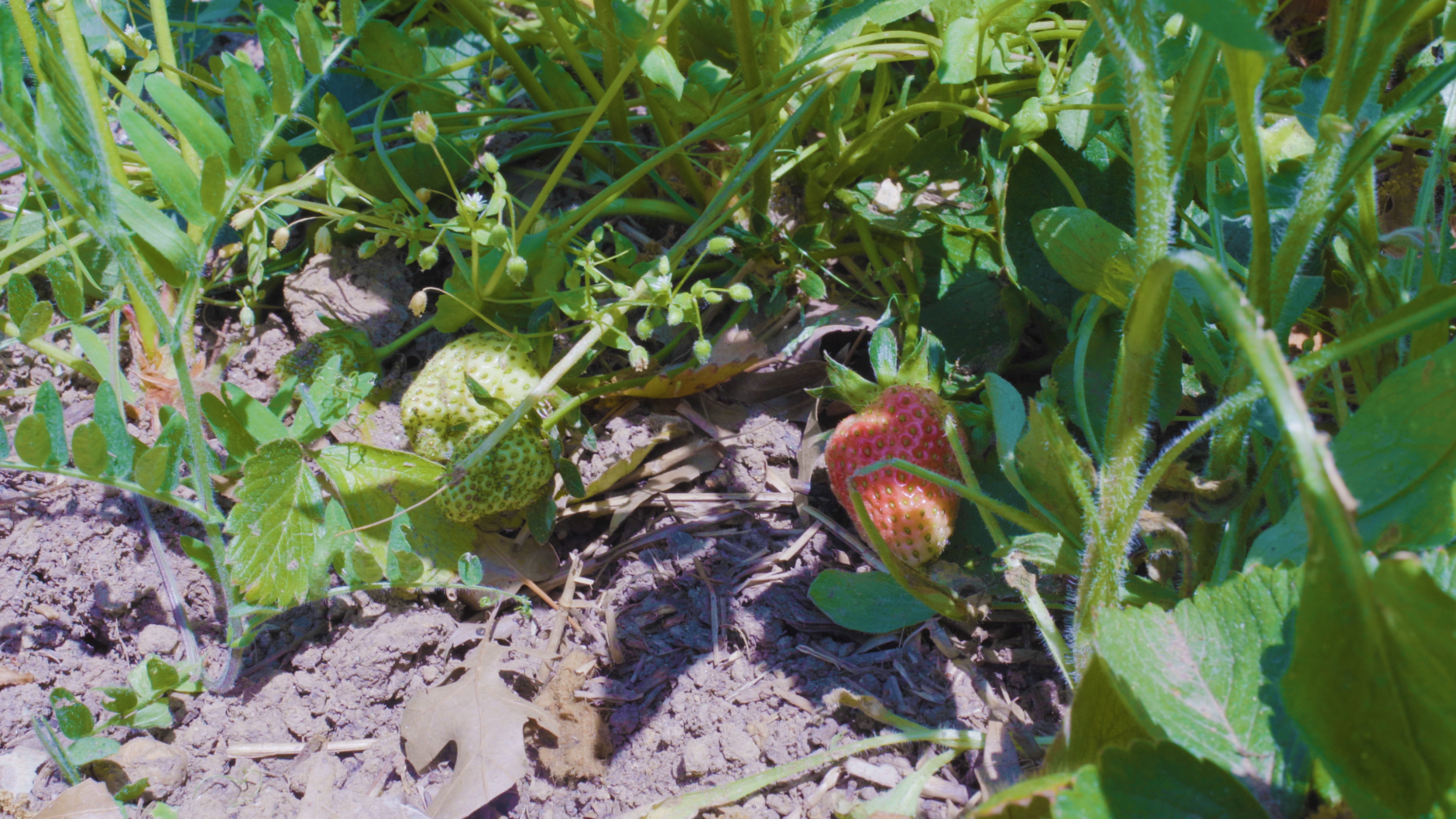
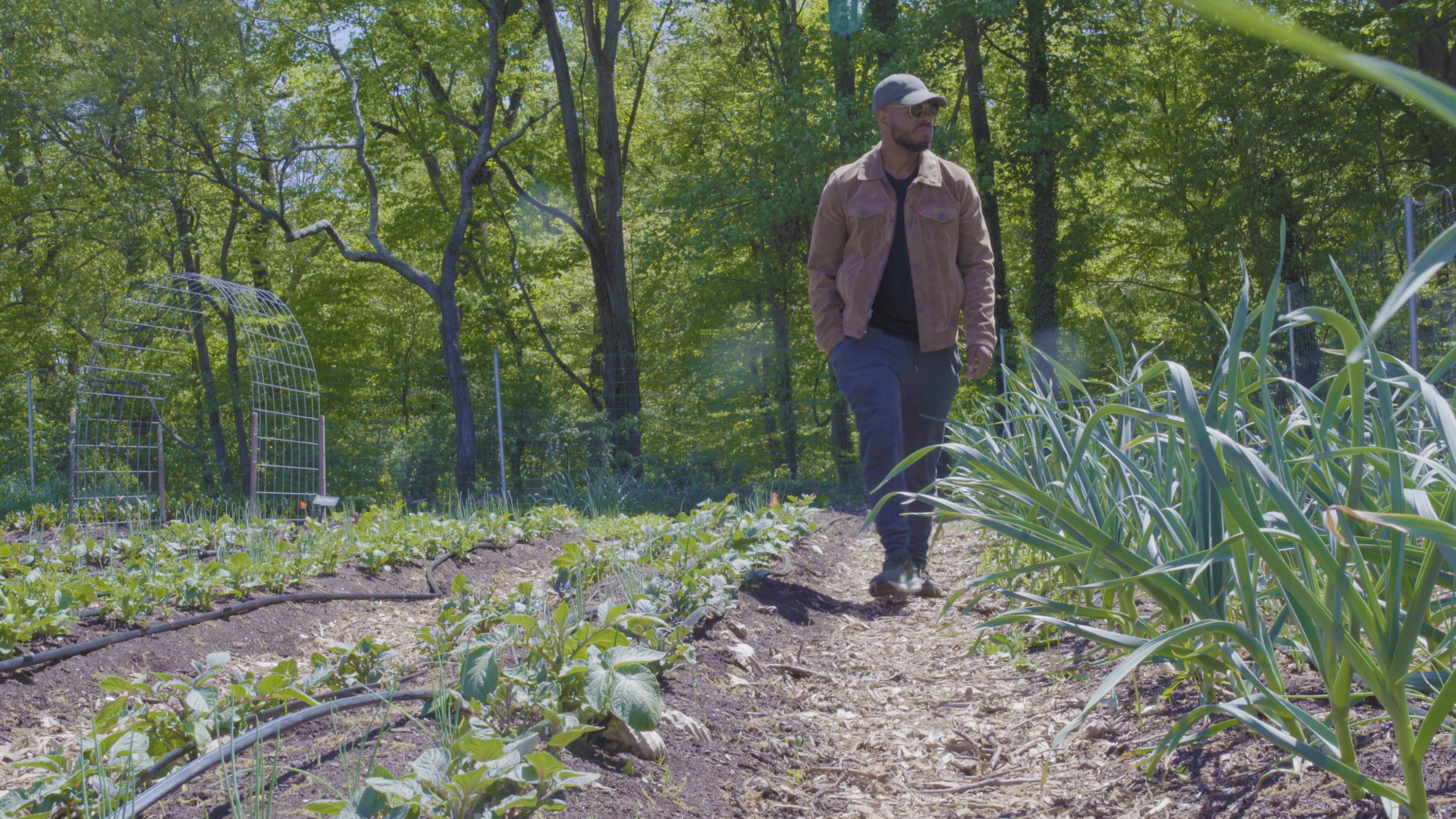
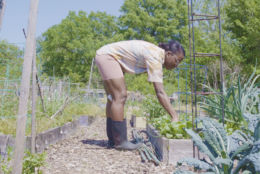
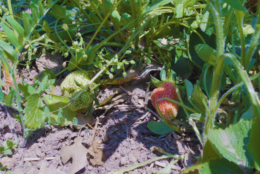
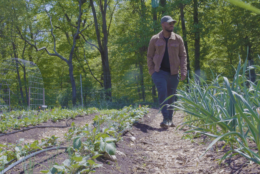
Fostering a green thumb
For those elsewhere in Virginia, Maryland and across the District, there are several ways to foster a green thumb — but the number of plots can be slim.
The D.C. Department of Parks and Recreation has over 30 community gardens across the city with requirements that gardeners must be residents of the District and follow basic rules to secure access to a plot.
Both the City of Alexandria and Arlington in Virginia have seven community gardens each, while the City of Fairfax lists only two community gardens on its official website. In Montgomery County, Maryland, there are over 10 community garden locations, while Prince George’s County has just five locations.
With such few garden locations, high demand can lead to long waiting lists. In Alexandria, Chinquapin Garden’s waitlist has only grown since the pandemic first started. Anne Saul, vice chair of the garden’s advisory board, said it can take two years or longer for someone to attain a plot in the garden.
Stacey Marien, a gardener at Friendship Community Garden in D.C., said that some of the bigger plots at the garden have been divided to allow for more participants.
“It’s not a heavy turnover,” she said, so it can even take four or five years for a plot to become available.
While demand can be high to join a community garden, Saul said, “This is tax-supported land, and it may not be as beneficial tax-wise, revenue-wise to a municipality.”
Michelle Nelson is a community garden program manager with Montgomery Parks.
“I think that sometimes when you’re looking at what is required for a community garden — big, open space, sunny, no trees — I think that is becoming more sparse, and sometimes you’re competing with priorities.” Nelson said.
Nelson added that she does believe, though, that “most gardens in the region will flourish,” in part thanks to strong local advocates.
One advocate in particular is Stephanie Eyocko, the board chair of Wangari Gardens in D.C.
Wangari Gardens is named after Kenyan activist Wangarĩ Muta Maathai, who founded the Green Belt Movement, which empowered women to plant trees in order to address global deforestation.
Eyocko said that Maathai has been a “guiding star” for her, saying, “urban gardening in all its forms is a form of resistance.”
“I think that being in an urban setting, it’s really important for us to go outside and to have access to spaces like this because a lot of the city is filled with concrete, and those places end up being heat islands,” Eyocko said.
Alongside the benefits to the wildlife and native flora, with community gardens acting as a sort of “sanctuary” to the natural ecosystem, Eyocko emphasized that, “There is always a lot to be done, but as we go forward, respecting this earth and respecting this space, I think we can go very far.”
Do’s and don’ts
There are several do’s and the don’ts of participating in a community garden.
Those who participate in community gardens run with the rule to not sell their plants, but are instead encouraged to donate when able. Those at Chinquapin Garden donate to Mother of Light Center, a not-for-profit organization based in Alexandria.
Nelson told WTOP that while there are gardeners who primarily grow food for personal consumption, there are some who donate produce to an all-volunteer organization in Montgomery County, called HarvestShare.
“We’re trying to make sure that we put our program in places where maybe this can help people who maybe don’t have backyards or spaces to actually grow their own food,” Nelson said. “We’re really trying to be a little bit strategic with how we create this amenity for residents in the County.”
Getting started can sometimes be the hardest part of creating and preserving a garden. The cost of buying the needed materials to maintain the space can be difficult for some as can digging into the ground for the first time.
But as Riddick told WTOP, “When you come here, everything is already set for you … You can use the community as a resource to learn as you go.”
Camaraderie is a common theme for community gardens, so they encourage newcomers to ask for some advice from fellow gardeners.
It can be a big time commitment, more than some may realize.
“You can’t just come in and plant your tomatoes and come back a month later,” Marien said. “It is a lot of work.”
Richard Dorrier, chair of Chinquapin Garden’s Advisory Board, said that it’s essential for gardeners to maintain their garden plots. While garden plots vary in size, even smaller plots can feel daunting to maintain when it’s hot out or when a plot is full of weeds.
To ensure gardeners don’t feel too discouraged by the challenge, Dorrier said that Chinquapin sometimes hosts members of the Master Gardeners of Northern Virginia, an organization of volunteers who work with the Virginia Cooperative Extension to promote gardening.
The Master Gardeners may provide advice or distribute seeds during their talks and trainings.
“Do experiment,” Nelson said. “Gardening is a whole bunch of trial and error.”
She also recommended that gardeners, especially new ones, shouldn’t be too hard on themselves if their harvest doesn’t end up how they may want. So, avoid lofty expectations.
“We all learn as we continue to be here … and every year is a new year,” Dorrier said.


